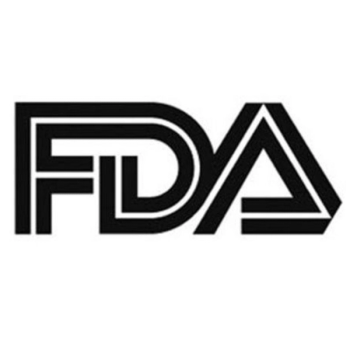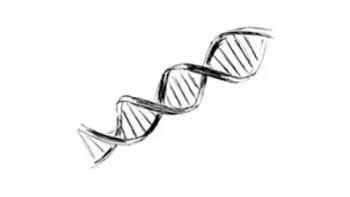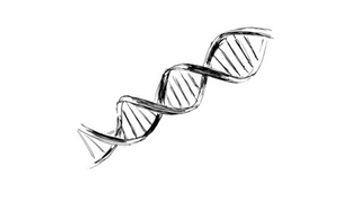
Use of Olaratumab for LMS Metastatic to the Peritoneum and Lungs
Brian Van Tine, MD, PhD:The standard approach by most gynecologic oncologists for a patient like this would be to treat them in the frontline setting with gemcitabine and docetaxel. There were data recently presented at ASCO that showed that you’ve got equivalent outcomes, and probably less toxicity, using doxorubicin up front in a head-to-trial. Now, with the addition of olaratumab, there is an abstract that was being presented by myself and Robin Jones looking at the outcomes of uterine leiomyosarcoma patients being treated with adriamycin/olaratumab. They had the same overall survival benefits as every other patient in this trial, with about a year overall survival with the addition of olaratumab to doxorubicin. And so, now it becomes this new conflict which is in a field that’s very well established, where a frontline therapy is gemcitabine and docetaxel. I think by the time a lot of these patients either get to a medical oncologist that specializes in the treatment of sarcoma, you may find a little bit of conflict. But, whether this was used in the frontline or second-line setting, I think there’s still a lot of added benefit. Because in the phase II trial, most of those patients did not receive their doxorubicin/olaratumab as frontline therapy.
The addition of this monoclonal antibody to an anthracycline really begins to change our approach to the treatment of soft-tissue sarcoma. I think, traditionally, we had two possibilities based on some older data. A lot of sarcoma doctors combine ifosfamide with doxorubicin. The others, based on data that showed equivalence, would use doxorubicin and ifosfamide, separately, because there are data showing equivalent overall survival. But, if you look at it, response rates are higher in combination. So, there was an art to what we were trying to accomplish. Bringing in olaratumab, we now add a third path, and so you have those of us that will use doxorubicin frontline as a monotherapy. The doxorubicin with ifosfamide still has a higher response rate. Depending on what you’re trying to accomplish, it isn’t in a regimen that’s going to completely go away. Now, it is probably the standard of care, doxorubicin with olaratumab, for widely metastatic disease in patients where, in general, you’re trying to palliate them and not cure them in this stage IV setting.
So, my clinical experience with olaratumab goes back to about 2010. About just under 25% of the people who were in the phase I/II trial were actually put on at my center, and I knew all of them very personally. What was really nice was actually the side-effect profile of the addition of the monoclonal antibody to doxorubicin. And, what was even better were the patients who made it to maintenance and stayed on it for quite a long time. We had some patients who were on it for years. And the quality of life on maintenance was amazing. If you looked at the really prolonged tumor stability that the combination gave a lot of our patients, it really did, apparently if you look at the actual data, give the whole population of patients we treated an overall survival benefit of just under a year. And, that’s just outstanding for a therapy that is just, compared to doxorubicin and ifosfamide, clearly superior from a side effect standpoint. And so, if you look at each and every person across each and every different histology, there were patients whose tumors shrank late. There were patients who really tolerated this well, and I really feel like this is a nice therapy to add to doxorubicin, which we’re just going to frankly give anyway.
Most of these patients who went on these trials using olaratumab, in the beginning, were actually metastatic, not that many were locally advanced at our center. I really like this as a therapy for metastatic disease because of its tolerability, and the fact that now we have a clinical trial showing that it looks like it has a lot of efficacy at the same time.
What I really think is important, though, is to look at the design of the original phase I/II, which was actually 8 cycles of doxorubicin as opposed to the standard 6 cycles that a lot of people were actually used to giving. And so, there was additional anthracycline given, which may actually be important in giving you this overall survival. Getting people comfortable with the use of dexrazoxane is actually important because if you go out that far, you do have to worry about heart damage much more than you would normally. If we’re going to push, I think we actually have to work as a bigger unit to make sure that we don’t do a lot of heart damage while trying to give patients overall survival.
So, where can you use this? I think of that as there’s a number of patients that come in to your practice. One of the things I’ve seen as patients come to a center of excellence from out in the community is sometimes there are novel approaches given in the frontline setting which aren’t necessarily based on doxorubicin. And so, whether it’s one of the newer drugs given not on labelsay whether we gave say trabectedin as frontline therapy as opposed to a doxorubicin regimen, which was how the original Yondelis trial was written, or if patients were given pazopanib up front because it was oral because they didn’t want to do chemotherapy—one of the questions that comes up is, should you add olaratumab to doxorubicin, say, fourth line? Based on how the original phase II part of this trial was designed, the answer is yes. What we saw was that it’s important to add this to doxorubicin not necessarily the line that it was given. We saw higher response rate the earlier doxorubicin was given, but I think that’s the response rate to doxorubicin. And so, whether you use this as frontline therapy—which would probably, outside of uterine leiomyosarcoma, become a standard of care second- or third-line because they hadn’t seen an anthracycline—I think it’s important to use in combination.
Case Scenario 2:
- The patient is a 61 year-old Caucasian woman, diagnosed with uterine leiomyosarcoma (LMS) metastatic to the peritoneum and lungs.
- The tumor is 11 cm in diameter
- Her performance status is 1










































